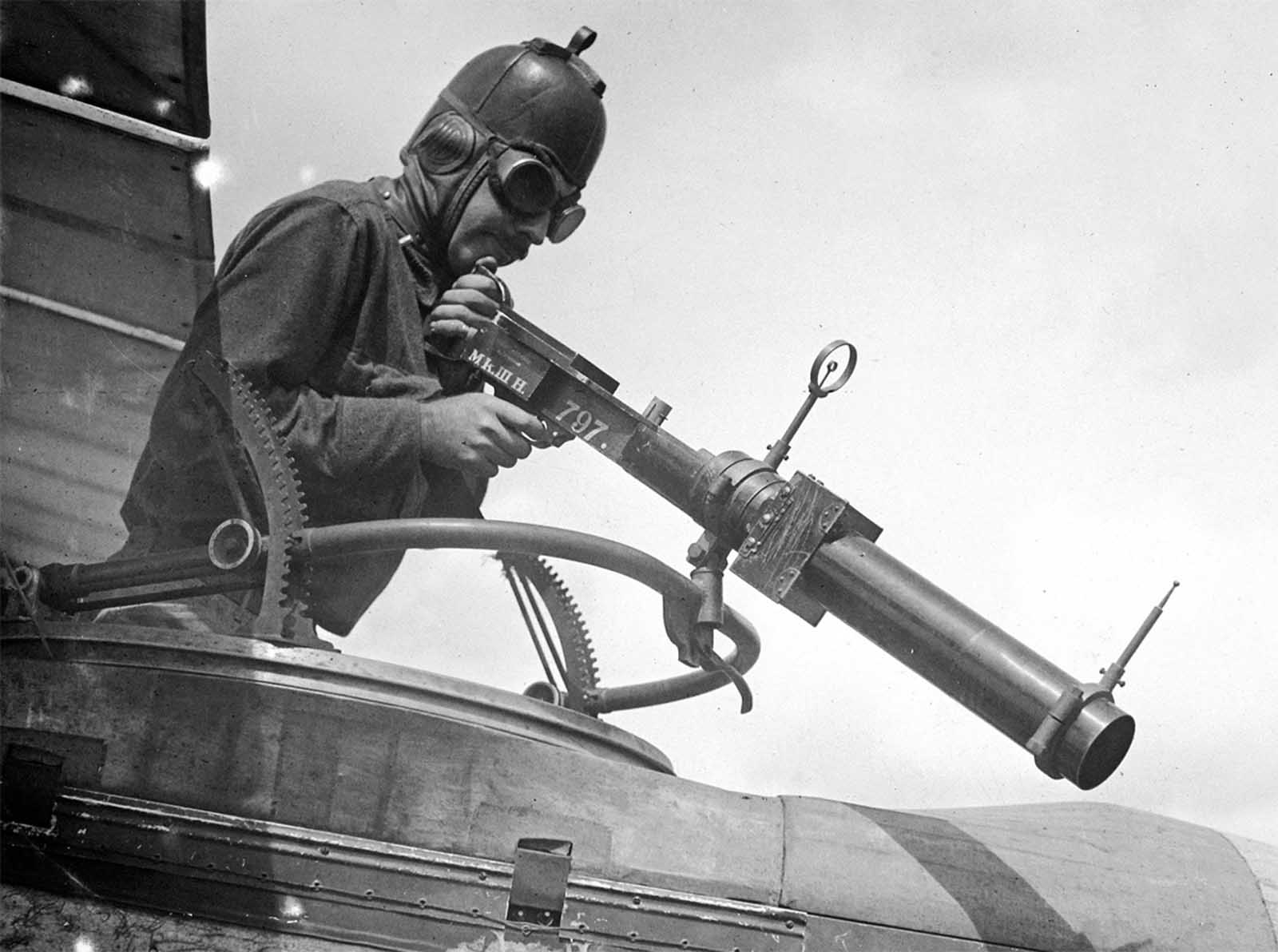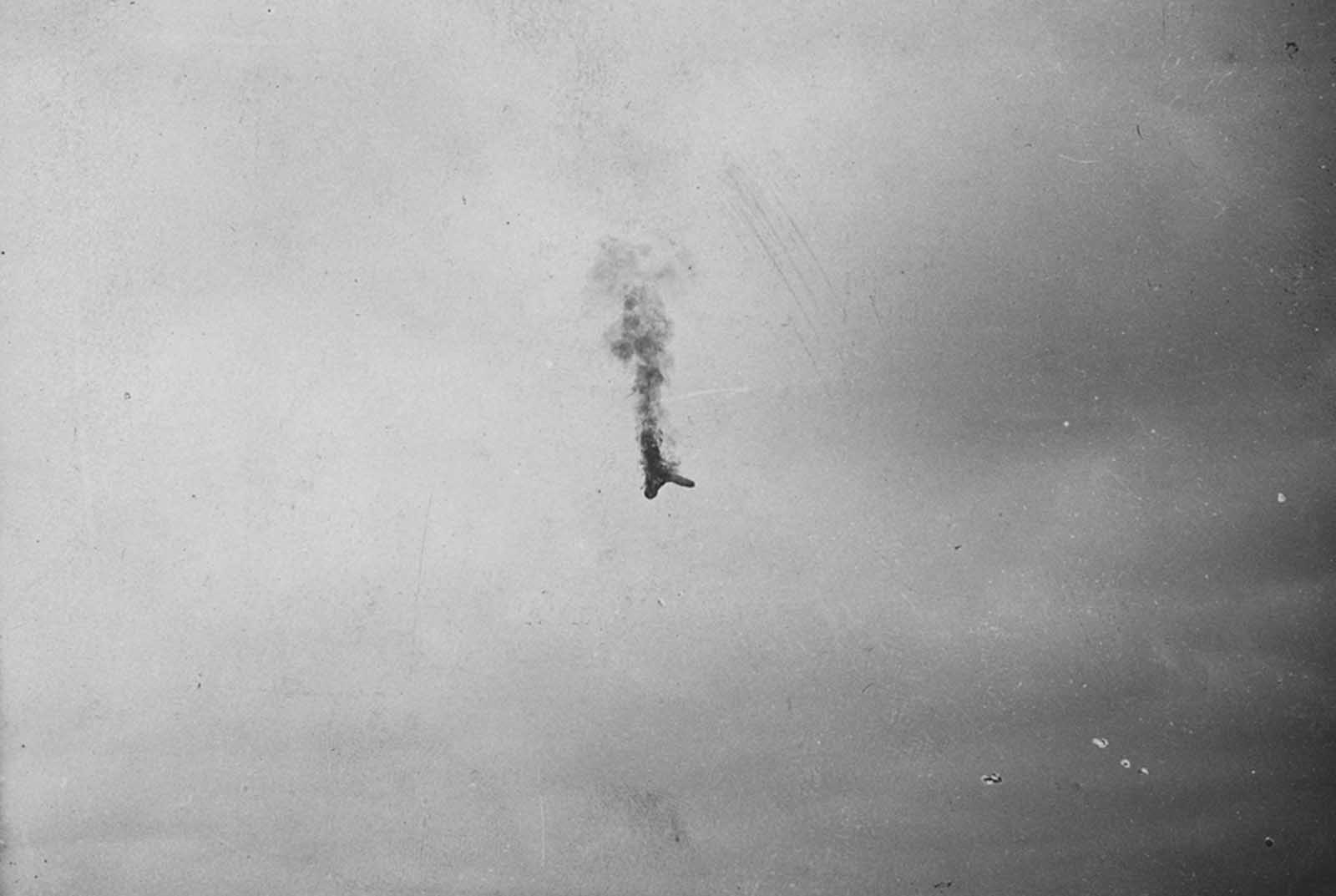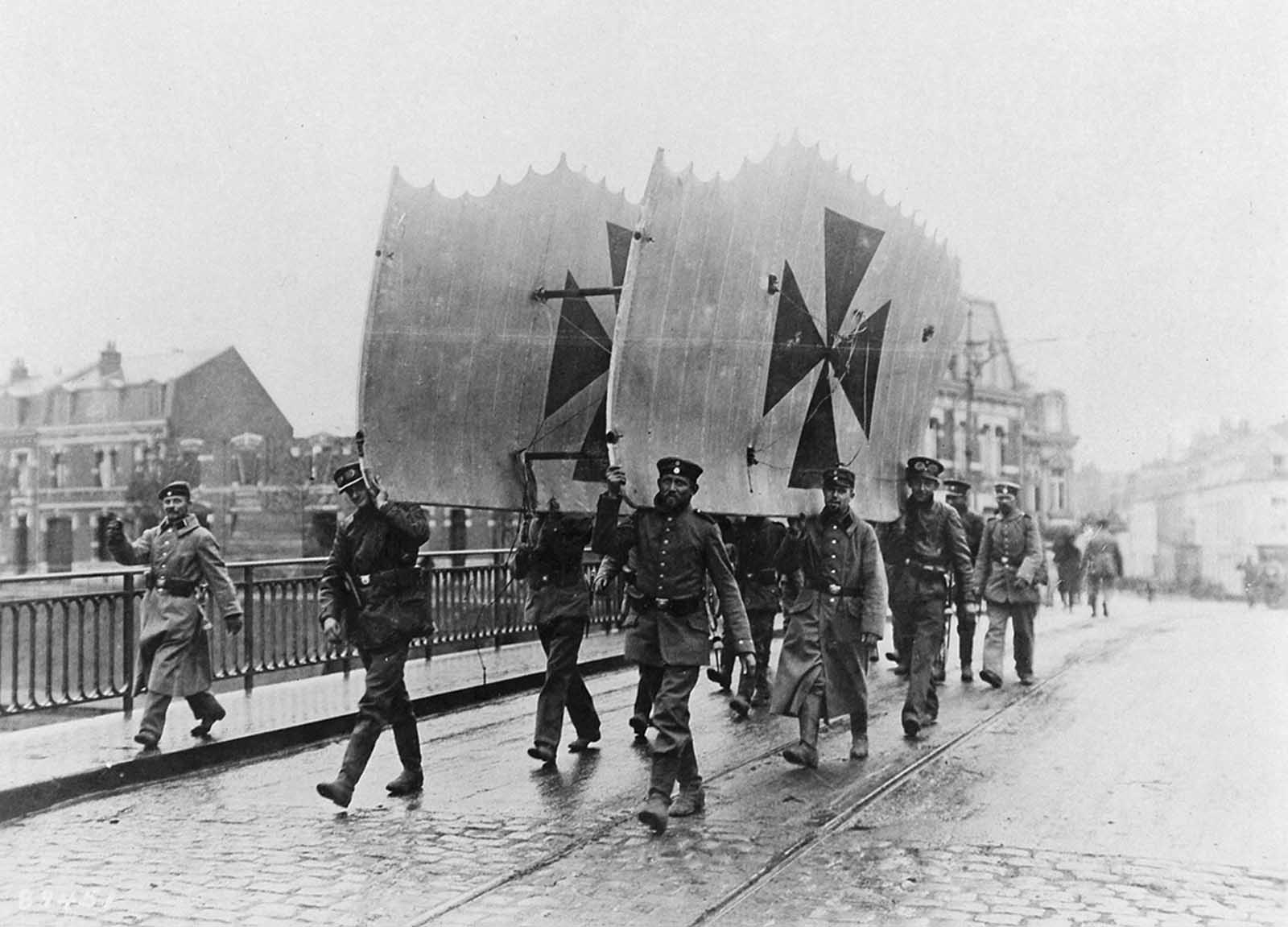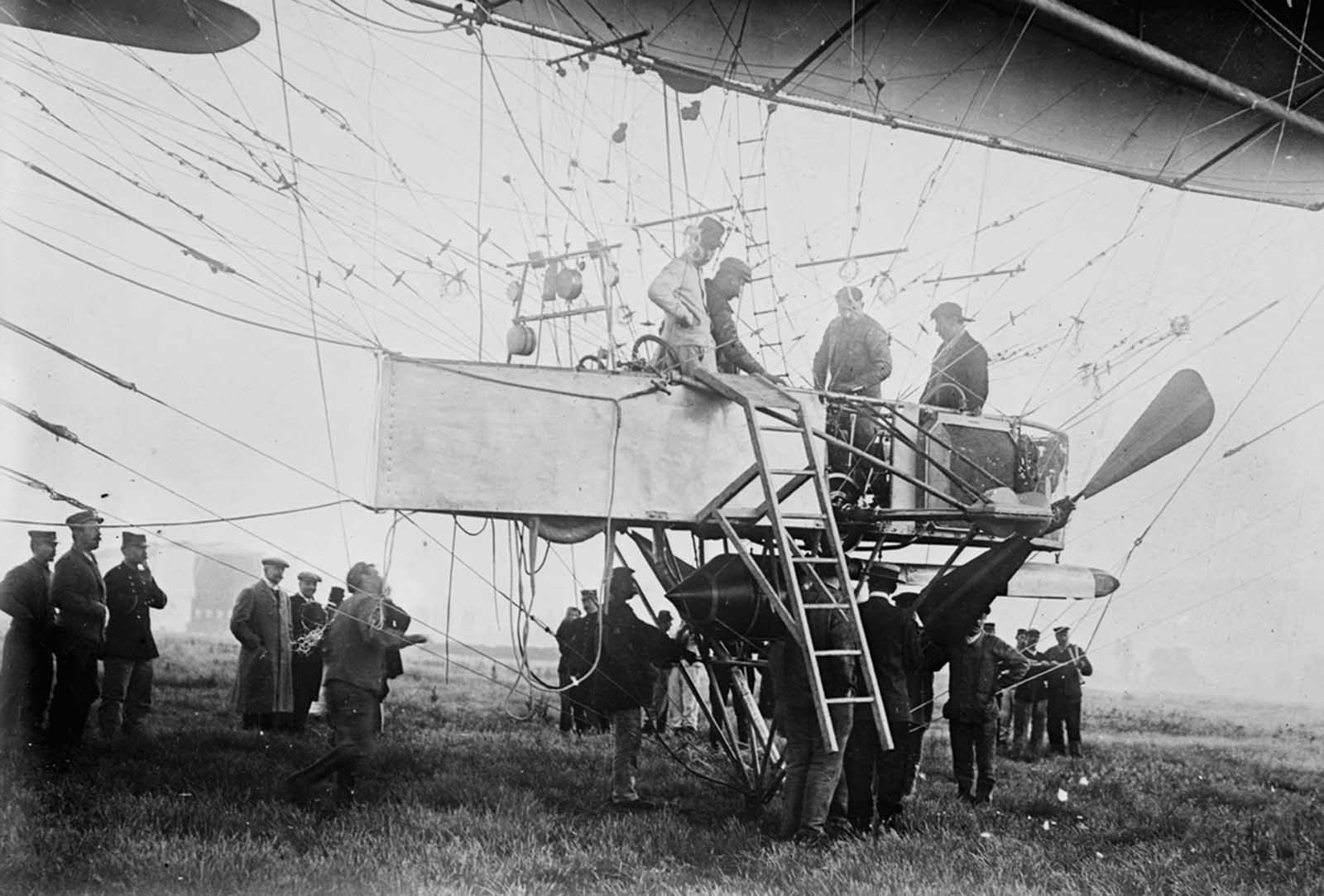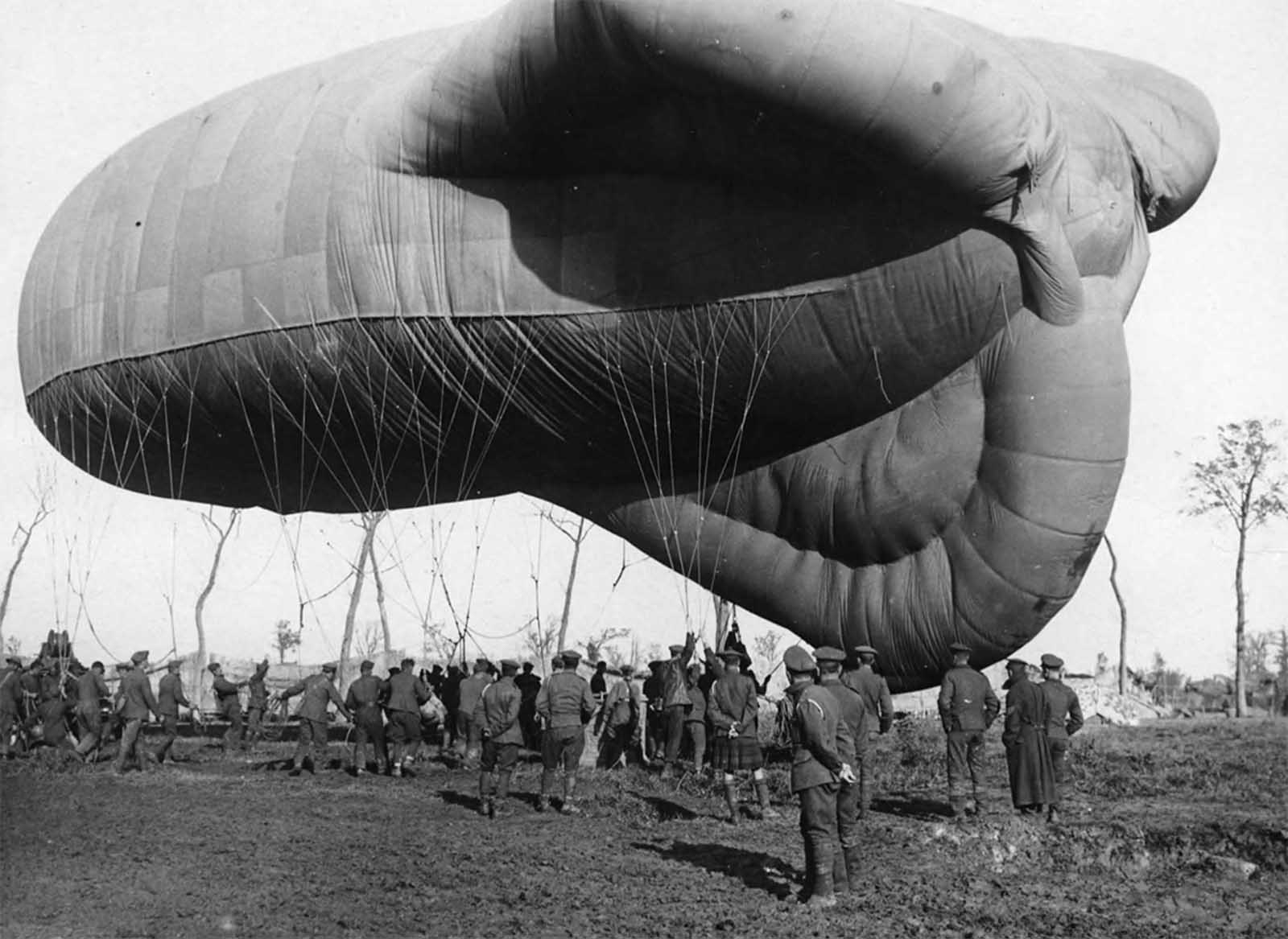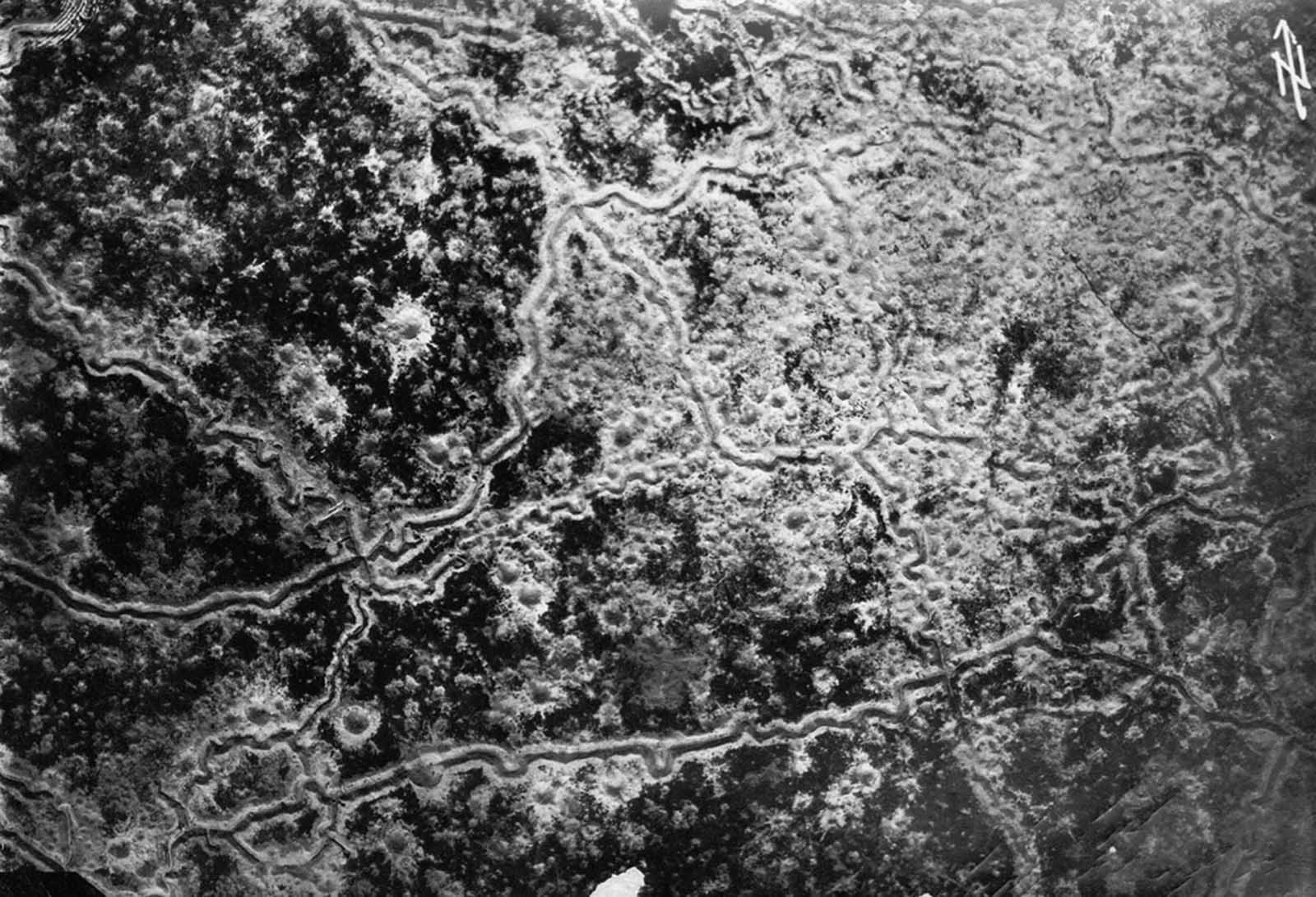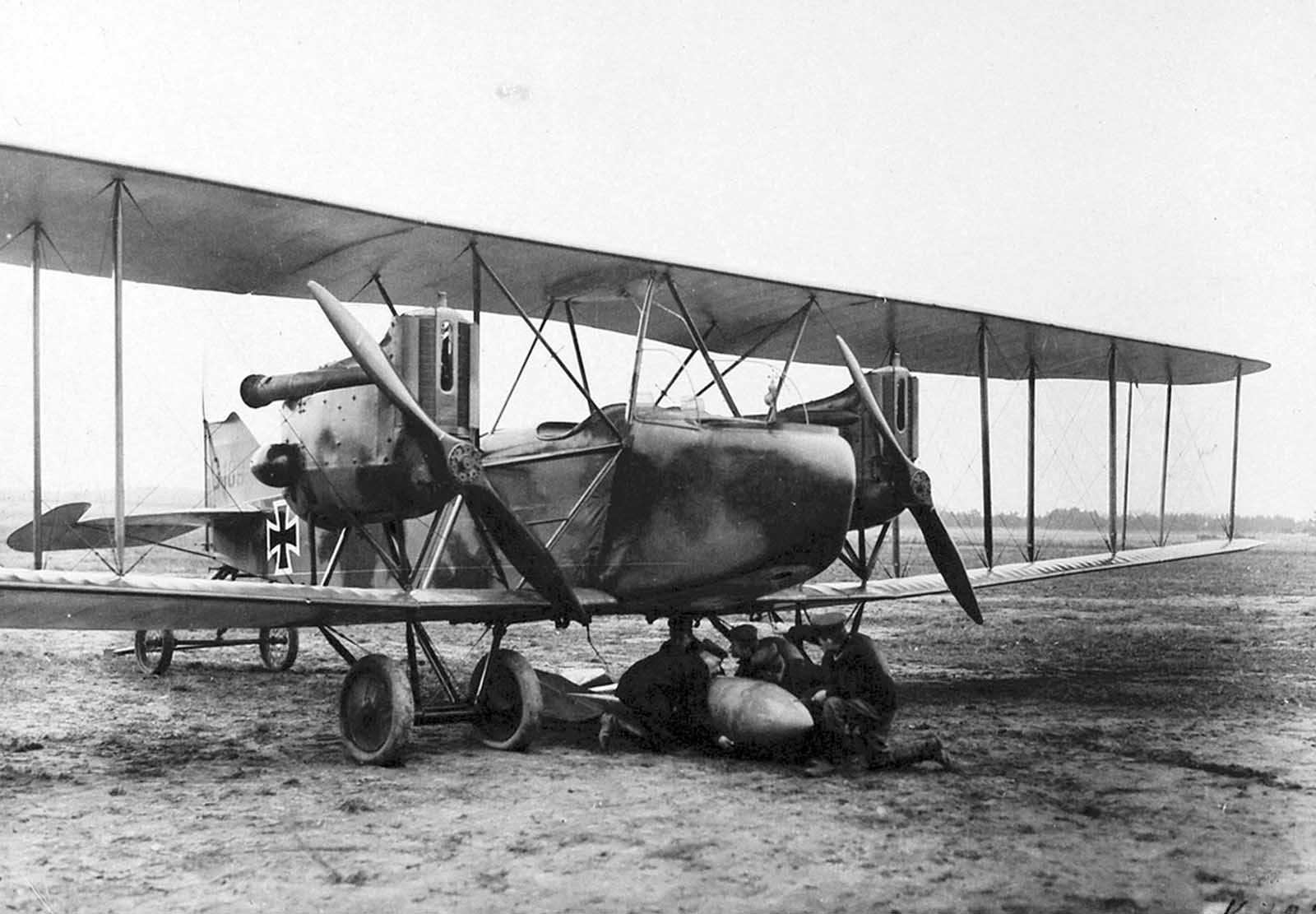Planes had been used for bombardment missions during the Italo-Turkish War of 1911-1912. Yet, aerial warfare during the First World War marked a rupture with these past examples. It was the first conflict during which aircraft were involved on a large scale and played a significant role. At the beginning of the war, the usefulness of air machines was met with a certain amount of skepticism by senior officers on all sides. In fact, airplanes were mostly involved in observation missions during the first year of the conflict. However, rapid progress enhanced airplanes’ performance. In 1915, the Dutch aircraft manufacturer Anthony Fokker, who was working for the Germans, perfected a French invention allowing machine-gun fire through the propeller. This discovery had a revolutionary consequence: the creation of fighter aircraft. This type of plane gave an edge to the Germans during 1915. Their air superiority was to last until April 1916, two months after the beginning of the battle of Verdun. Thereafter, Allied dominance was gained through the creation of French fighting squadrons and the expansion of the British Royal Flying Corps. The control of the sky was to change hands again in the first half of 1917 when the Germans reformed their squadrons and introduced modern fighters. During April 1917, nicknamed ‘bloody April’, the British suffered four times more casualties than the Germans. But things were on the move on the Allied side. Successful reorganizations in France and Britain brought back air control for good until the Armistice. During 1915, another important step was taken when the Germans organized strategic bombing over Britain and France by Zeppelin airships. In 1917-18 ‘Gotha’ and ‘Giant’ bombers were also used. This new type of mission, targeting logistic and manufacturing centers, prefigured a strategy commonly adopted later in the century. Inevitably, bombardments of ports and factories were quickly adopted by all sides and led to civilian deaths. Although the number of civilians killed by aerial machines remained small during the war, these air raids nonetheless caused widespread terror. Yet, planes were on occasions a welcome sight. Indeed, aircraft and balloons were used by the Allies from 1915 to 1918 to drop propaganda leaflets over occupied France, Belgium, and Italy in order to combat German psychological warfare. Propaganda was also dropped on German soldiers in an attempt to demoralize them. In 1915, aviation caught the attention of the press both in Germany and in the Allied countries. Fighting pilots credited with at least five victories became known as ‘aces’ and were admired as celebrities on Home Fronts until the end of the conflict. This phenomenon illustrates the ability of war culture to penetrate all aspects of society but also underlines a paradox: heroes of the air became glamorous because they were clean and deemed noble while their infantry counterparts remained an anonymous mass, stuck in the mud of the trenches. This romanticized admiration by the public of flying aces was a cause of tension and jealousy between army and air force. By the war’s end, the impact of air missions on the ground war was in retrospect mainly tactical – strategic bombing, in particular, was still very rudimentary indeed. This was partly due to its restricted funding and use, as it was, after all, a new technology. On the other hand, the artillery, which had perhaps the greatest effect of any military arm in this war, was in very large part as devastating as it was due to the availability of aerial photography and aerial “spotting” by balloon and aircraft. Tactical air support had a big impact on troop morale and proved helpful both to the Allies and the Germans during 1918 when coordinated with ground force actions. But such operations were too dependent on the weather to have a considerable effect. Meanwhile, fighting planes had a significant impact in facilitating other aerial activities. Aviation made huge technological leaps forward during the conflict. The war in the air also proved to be a field of experimentation where tactics and doctrines were imagined and tested. Air force units were reorganized on numerous occasions to meet the growing need of this new weapon. Crucially, aerial strategies developed during the First World War laid the foundations for a modern form of warfare in the sky. During the course of the War, German Aircraft Losses accounted to 27,637 by all causes, while the Entente Losses numbered over 88,613 lost (52,640 France & 35,973 Great Britain). (Photo credit: Bundesarchiv / Bibliotheque nationale de France / National World War I Museum, Kansas City, Missouri, USA / Text: Bernard Wilkin). Notify me of new posts by email.
Δ Subscribe






